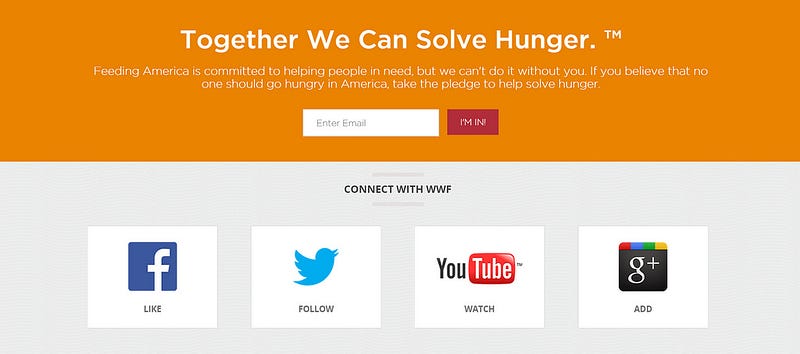
“Just Google it.” Online research has become our protocol to find the best solution for both simple and challenging problems. In fact, 94 percent of B2B buyers perform online research prior to making a purchasing decision. Specifically, a landing page is the best way to display your product and/or service to prospects in order to generate leads to fuel your sales pipeline.
Lead generation landing page objectives, models, and best practices
Dedicated landing pages are ideal to make a lasting first impression with prospective customers. They’re constructed with a single goal, whether that’s to promote a new eBook, sign-people-up for a webinar, propose a free demo, etc.
Photo by Le Buzz on Unsplash
Lead generation focused landing pages instills a smooth experience between an advertisement and the information portrayed to a potential buyer. Essentially, the prospect sees only the facts that they’ll comprehend as most intriguing. More importantly, viewers won’t be thrown-off by superfluous content on your website.
The best lead generation landing pages utilize characteristics such as vibrant headlines, compelling copy, and CTAs to influence possible buyers to conclude on the offer.
Now let’s look at the key to creating an effective lead generation page from the top.
1) Headline

Lead generation pages cannot live without a headline that effectively demonstrates the benefits of the offer. Action headlines actually nudge viewers to take a specific action, and number headlines place a numerical value on the offer and/or disclose a statistic to grab visitor’s attention. Most of the time, visitors will digest the headline but only skim through the elaborate content.
Here’s an example of a powerful headline from a FireEye landing page.
2) Header without navigation

Have you ever visited a store and been so overwhelmed with choices that you didn’t even end up purchasing anything? That’s the reason behind optimized landing pages not containing a navigation menu.
Websites are browsing experiences, which is why they require a navigation menu, making them ineffective for conversion. For lead generation pages, menu options give visitors a simple opportunity to exit the page without converting.
Here is a good example from Netsuite.
3) Relevant images

Images relevant to your offer will aid prospects in comprehending its advantages to the extent that 65% of people retain information paired with relevant images — compare that to just 10% of viewers who only hear the information. Therefore, it’s optimal to implement an image that showcases someone using your product and/or service or highlights what the visitor will gain if they convert on the page.
In this Oracle example, the image flatters the rest of the landing page as the man is presumably utilizing Oracle’s sales cloud software.
Also, notice that his eyes are positioned towards the “Get Started” call-to-action option and the email capture field. This is known as a visual cue and suggests that visitors should give their email and register for a live demo.
4) Copy

Most landing page visitors are searching for a copy they can skim, not digest in full, so stay-away from large paragraphs of text at all costs. It’s also smart to keep your landing page copy brief and apply bullet points whenever appropriate.
Bullet points don’t only keep your copy to a minimum, they also draw more attention then lengthy copy as viewers are skimming your page and contemplating your offer.
Take this landing page from Pardot’s for example, and how they make good use of bullet points.
5) Form
 Photo by Kasper Rasmussen on Unsplash
Photo by Kasper Rasmussen on Unsplash
That pitifully designed school-science project didn’t earn you an “A,” so why would a poorly constructed lead capture form capture valued prospects?
Potential buyers don’t want to waste time inserting personal information before they can convert the offer. One case study showed us that taking away a single form field can boost conversions 26%. The less information you require, the greater chance you will have on landing a conversion.
Here’s an example of a short form from Zoho — needing just three fields — raising the chance of conversion. What’s more, their color contrast of the CTA button gains visitors’ attention against the white background and the black font.
6) CTA
The call-to-action button (CTA) is the crux characteristic of a lead generation landing page since it’s how you generate a new lead.

No CTA button, no need to waste your time constructing a landing page. Consolidated Label dealt with that issue when they distributed an A/B test with the initial version omitting the CTA button.
Once they designed a fresh landing page alternative, they produced 62 percent more conversions than the first version.
Visitors need to feel obliged to select the CTA button. Influence them. Realistically, it’s the easy click of a button that stands between you and that fresh lead.
Furthermore, try to avoid dull copy such as “Submit” or “Finish”; instead, use copy tailored to you like “Send Me the Ebook.” Make it painfully apparent what prospects will receive.
An easy way to gain visitor’s maximum attention is to contrast the CTA color with the surrounding elements (see Zoho example above).
This D&B Hoovers landing page uses the CTA “Get My Free Trial,” which customizes the offer for the prospect.
7) Trust badges

What are trust badges? They are symbols or icons which illustrate the company’s brand credibility and authority. Various types of trust badges may be used to validate their product and/or service, these include things like industry awards, security seals, and customer logos.
For instance, a survey from Econsultancy/Toluna illuminated that trust badges critically increase the brand’s perception of trustworthiness and brands that prospects trust have a much greater chance of achieving a conversion.
On this landing page, Qlik uses customer logos to exhibit the major brands they work with, making visitors perceive them as more credible and legitimate.
8) Social proof

Tools such as customer reviews, testimonials, and case studies are social proof of possible leads, as they showcase a history of positive experiences with your company. There’s hardly any better ways to demonstrate the legitimacy of your company than to have prior customers promote for you.
Lead Forensics showcases social proofing well with their customer testimonial.
9) Privacy policy

In today’s digital age, visitors want reassurance that their personal data won’t be misplaced and/or misused after they submit a form. A simple way to acknowledge this and install trust is to provide a privacy policy on the landing page.
This Spectrum page implements a privacy policy link in the footer, which opens a new tab — moving viewers away from the offer. The privacy policy itself is sufficient, but it would be more effective to have the link appear in a pop-up rather than a new tab.
10) Thank you page

One of the most underrated features of lead page campaigns is the thank you page. These pages should appear immediately following a visitor converting the offer, as well as instruct visitors on where they can receive the offer.
In this Salesforce example, the “Start Tour” option enables viewers to take the next step immediately. An additional best practice for thank you pages is to guide visitors to take a look at additional company resources.
Highlights: How to Optimize Your Lead Generation Landing Pages
- The majority of prospects digest the headline and skim the copy, so an advantage-oriented headline and limited copy are vital to your landing page’s success.
- Design forms with minimal friction and includes a color-contrasting CTA command that contains a personalized copy.
- Social proof such as testimonials and case studies give credibility, so put a focus on positive engagements and results to strategically increase conversions.



